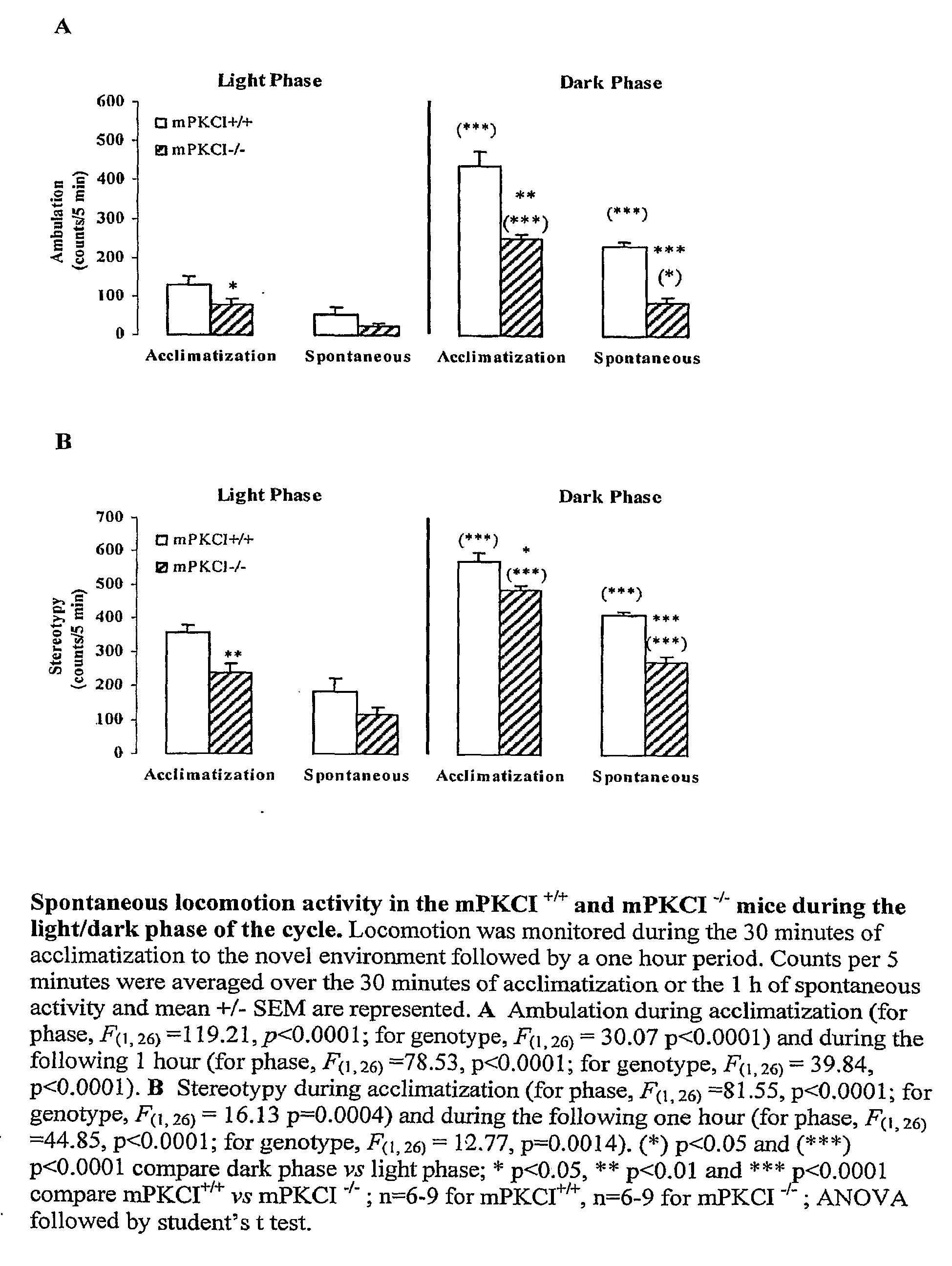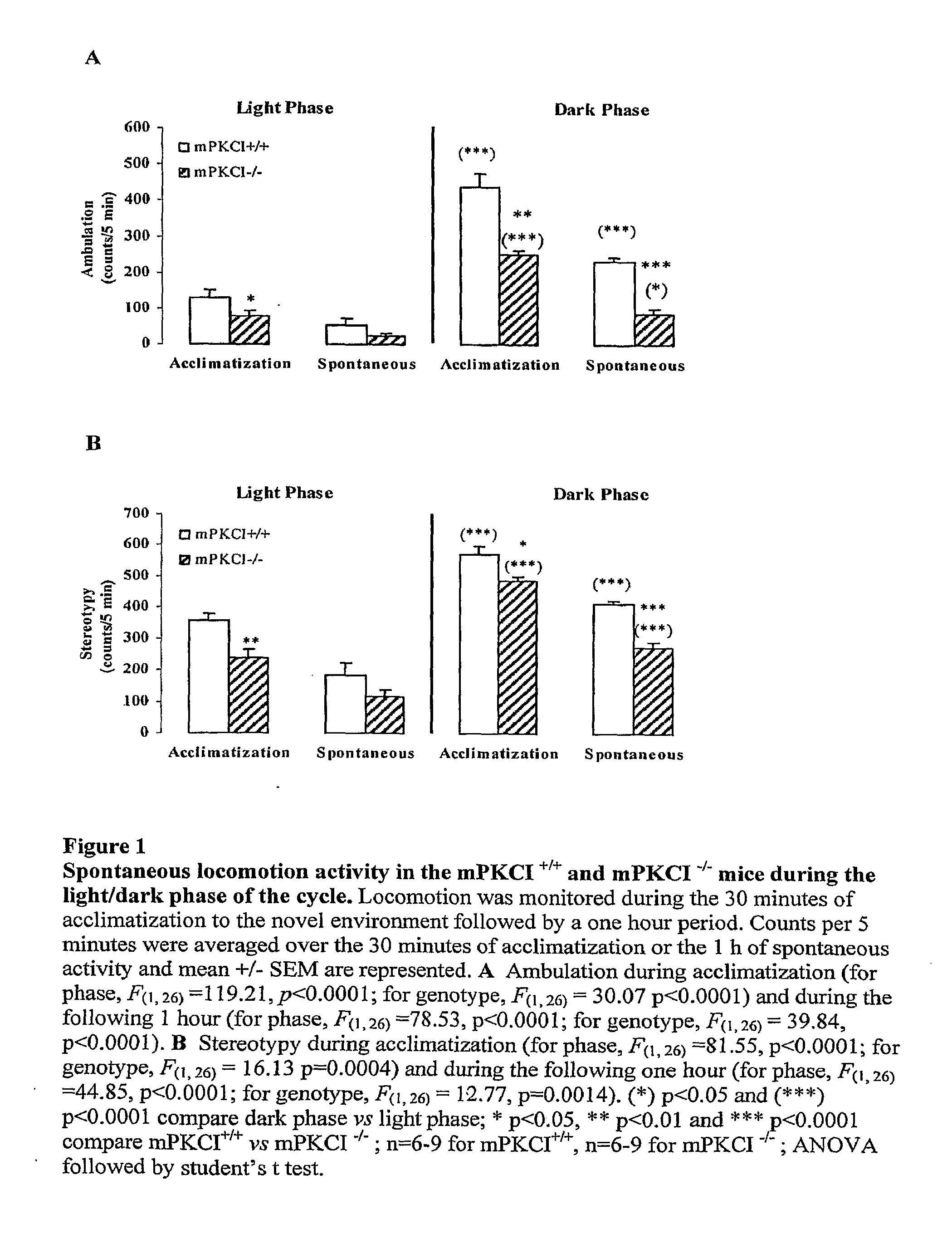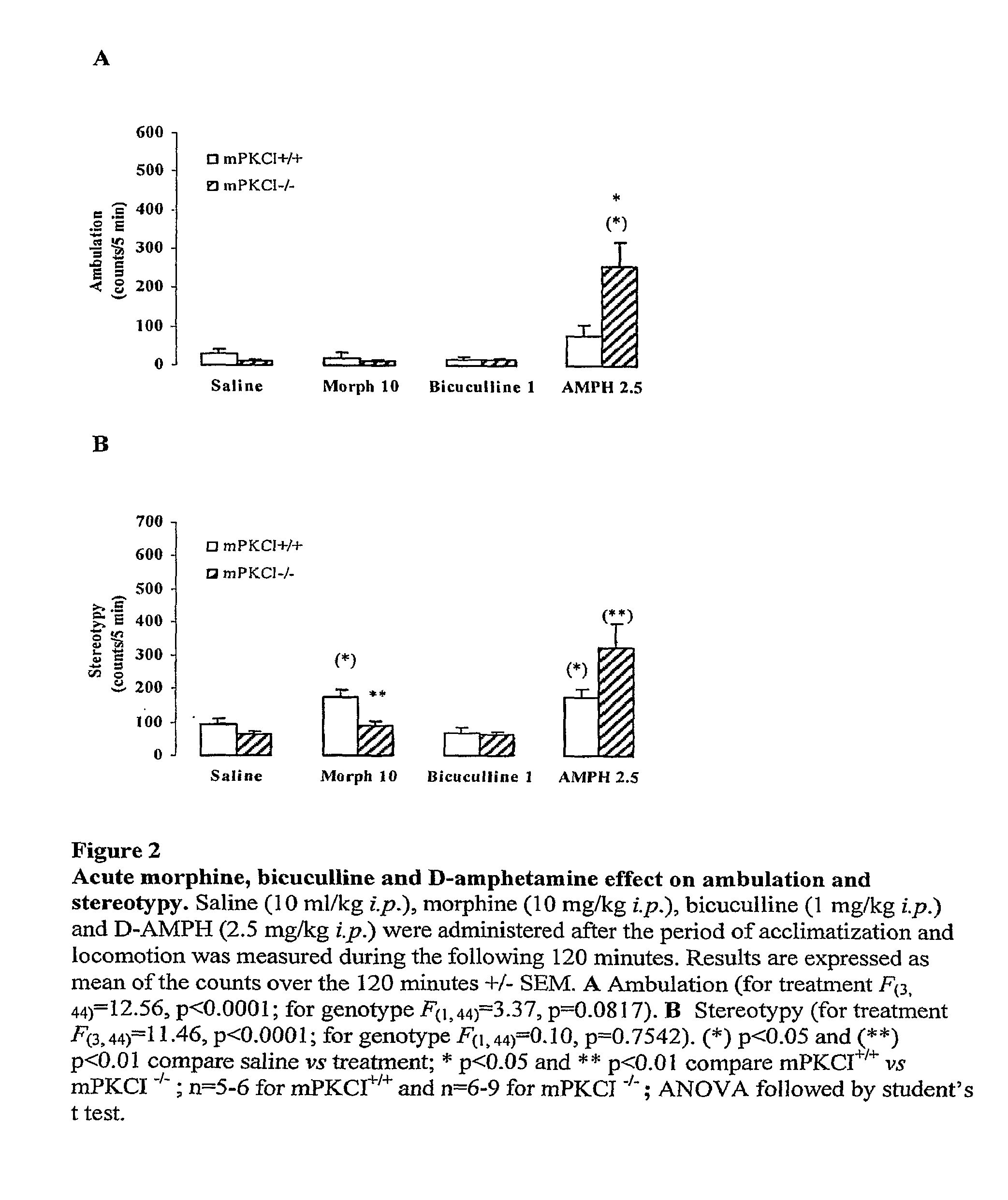Novel Neurological Function of mPKCI
- Summary
- Abstract
- Description
- Claims
- Application Information
AI Technical Summary
Benefits of technology
Problems solved by technology
Method used
Image
Examples
example 1
PKCI KO Mice with Lower Spontaneous Locomotor Activity Displayed Supersensitive Response to Amphetamine
[0106]The spontaneous locomotor activity measured during the light phase of the cycle (between 8:00 am to 3:00 pm) and during the dark phase of the cycle (between 9:00 pm to 4:00 am), which corresponds to the active phase, is shown in FIG. 1. During the light phase, WT and KO mice display a lower level of spontaneous activity, measured as distance traveled and stereotypic movement for 120 min. In the dark phase, both genotypes exhibit an increase of locomotion as expected. However, the KO mice consistently scored on average 40% lower than the WT in either the light or the dark phase. These results indicate that the KO mice are hypolocomotive both under habituated basal conditions (light / dark phases) or during exploration of a novel environment (acclimatization phase) in comparison with the WT mice.
[0107]Rodent locomotor activity is known to be affected by many drugs with CNS stimul...
example 2
Extracellular Dopamine Levels in Nucleus Accumbens and Dorsal Striatum
[0108]DA projections to the striatum play an important role in the control of locomotor activity. Therefore, we used the technique of in vivo microdialysis in order to investigate the consequences of genetic deletion of the mPKCI protein on basal extracellular DA dynamics as well as on the amphetamine-evoked DA response. Quantitative no net flux microdialysis indicated that there were no significant differences in basal dialysate (DA dial) levels nor in the estimated extracellular DA concentration (DAext) (FIG. 4). Moreover, the DA extraction fraction (Ed), calculated as the slope of the no net flux regression line was unchanged in KO mice, suggesting that deletion of the mPKCI / HINT1 did not alter the clearance of extracellular DA by the DA transporter (Smith and Justice 1994, supra; Chefer et al 2006, supra). Similar results were obtained in both the nucleus accumbens and the caudate-putamen. In addition, we inve...
example 3
Apomorphine Induced a Differential Hyperlocomotor Activity in mPKCI KO Mice
[0109]To further explore the mechanism responsible for the behavioral supersensitivity to amphetamine observed in mPKCI KO mice, we tested the locomotor response to the non-selective dopamine receptor agonist, apomorphine. A high dose (10 mg / kg) was used in order to probe postsynaptic DA receptor function. Data shown in FIG. 5 revealed that mPKCI KO mice responded with significantly higher locomotor activity as compared with WT in both total ambulation and stereotyped behavior. This result indicates that mPKCI / HINT1 deletion results in postsynaptic DA receptor supersensitivity. This observation suggests that the enhanced behavioral sensitivity to amphetamine observed in mPKCI mice is most likely through a modified postsynaptic mechanism.
PUM
| Property | Measurement | Unit |
|---|---|---|
| Dimensionless property | aaaaa | aaaaa |
| Time | aaaaa | aaaaa |
| Sensitivity | aaaaa | aaaaa |
Abstract
Description
Claims
Application Information
 Login to View More
Login to View More - R&D
- Intellectual Property
- Life Sciences
- Materials
- Tech Scout
- Unparalleled Data Quality
- Higher Quality Content
- 60% Fewer Hallucinations
Browse by: Latest US Patents, China's latest patents, Technical Efficacy Thesaurus, Application Domain, Technology Topic, Popular Technical Reports.
© 2025 PatSnap. All rights reserved.Legal|Privacy policy|Modern Slavery Act Transparency Statement|Sitemap|About US| Contact US: help@patsnap.com



